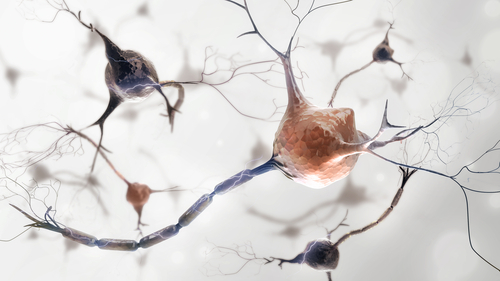Problems with Mitochondria of Neurons May Underlie CMTX6, Study Finds

Problems with energy production and mitochondria, the powerhouses of cells, may be the underlying cause of an X-linked form of Charcot-Marie-Tooth disease (CMT) called CMTX6, a study in patient-derived motor neurons suggests.
The study, “Energy metabolism and mitochondrial defects in X-linked Charcot-Marie-Tooth (CMTX6) iPSC-derived motor neurons with the p.R158H PDK3 mutation,” was published in Scientific Reports.
CMT is characterized by neurons with short axons (projections these nerve cells use to connect and communicate). Mutations in over 80 genes have been implicated in the development of CMT.
Mutations in the gene pyruvate dehydrogenase kinase 3 (PDK3), which codes for a protein of the same name, cause CMTX6. The PDK3 protein plays a central role in how cells use metabolic compounds to produce energy.
Previous research showed that the particular PDK3 mutation that causes CMTX6 produces an overactive PDK3 protein. Experiments using fibroblasts (skin cells) from a person with CMTX6 suggested that this excessive protein activity leads to abnormalities in mitochondria, and poorer energy production.
Researchers used fibroblasts from a person with CMTX6 and — through a series of biochemical manipulations — converted these cells into stem cells. Stem cells are able to differentiate into other cell types. Those that are “reverse engineered” from already-differentiated cells, such as the cells used here, are called induced pluripotent stem cells (iPSCs).
For comparison, they created a similar iPSC line from the same person’s fibroblasts — but in this control group of cells, the CMTX6-causing mutation in PDK3 had been corrected (such that the gene was no longer mutated).
The CMTX6 iPSCs had metabolism defects comparable to the fibroblasts, and these defects were not present in the control line.
These iPSCs were those used to generate CMTX6 and control motor neurons. No notable differences were seen in their ability to differentiate into motor neurons, or in the motor neuron’s ability to form connections with each other in lab dishes. This was somewhat unexpected, given that problems with axons are the hallmark of CMT. Additional studies may be necessary to fully characterize the axons of these generated motor neurons, the researchers suggested.
Again, CMTX6 motor neurons had metabolism and mitochondrial defects similar to those seen in the fibroblasts; these defects were not evident in the motor neurons generated from the control iPSC line.
When the researchers treated CMTX6 motor neurons with dichloroacetic acid, a chemical that blocks the activity of PDK3 and related proteins, the defects were normalized. Energy production, for instance, increased significantly.
This indicated that “metabolic defects in CMTX6 can be pharmacologically reverted,” the researchers wrote.
Further experiments suggested that, within CMTX6 motor neurons, mitochondria occupied a larger proportion of axons, were 1.5 times smaller, and produced significantly less energy than did mitochondria in control motor neurons.
Mitochondria transport was also troubled in diseased motor neurons. Neurons are among the largest cells in the body, and to work as they should, mitochondria must be are able to easily move to the particular parts of a cell where they are needed.
In CMTX6 motor neurons, mitochondria movement was significantly slower than in isogenic motor neurons (0.27 vs. 0.58 micrometers per second on average). Dichloroacetic acid treatment increased the average speed of mobile mitochondria within these nerve cells to 0.35 micrometers per second.
Other cell components were seen to move similarly in both CMTX6 and control motor neurons, suggesting that the slowness observed with mitochondria is a result of problems with the mitochondria themselves, and not with mobility in the cell more broadly.
“Our data shows the PDK3 mutation causes changes in the morphological features and distribution of the mitochondria in the patient-derived motor neurons, in line with our previous investigations using CMTX6 fibroblasts,” the researchers concluded. They also suggest that “energy deficits may be a primary cause of pathology in CMTX6.”
Researchers also noted that the generated iPSC lines, and derived motor neurons, could be a useful model for studying CMTX6 and for initial assessments of potential therapies.






